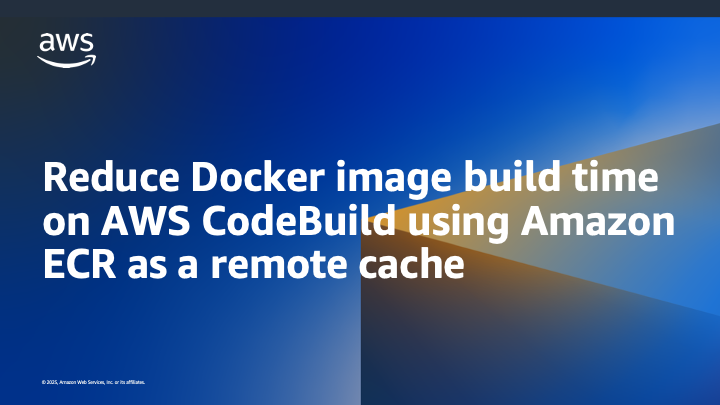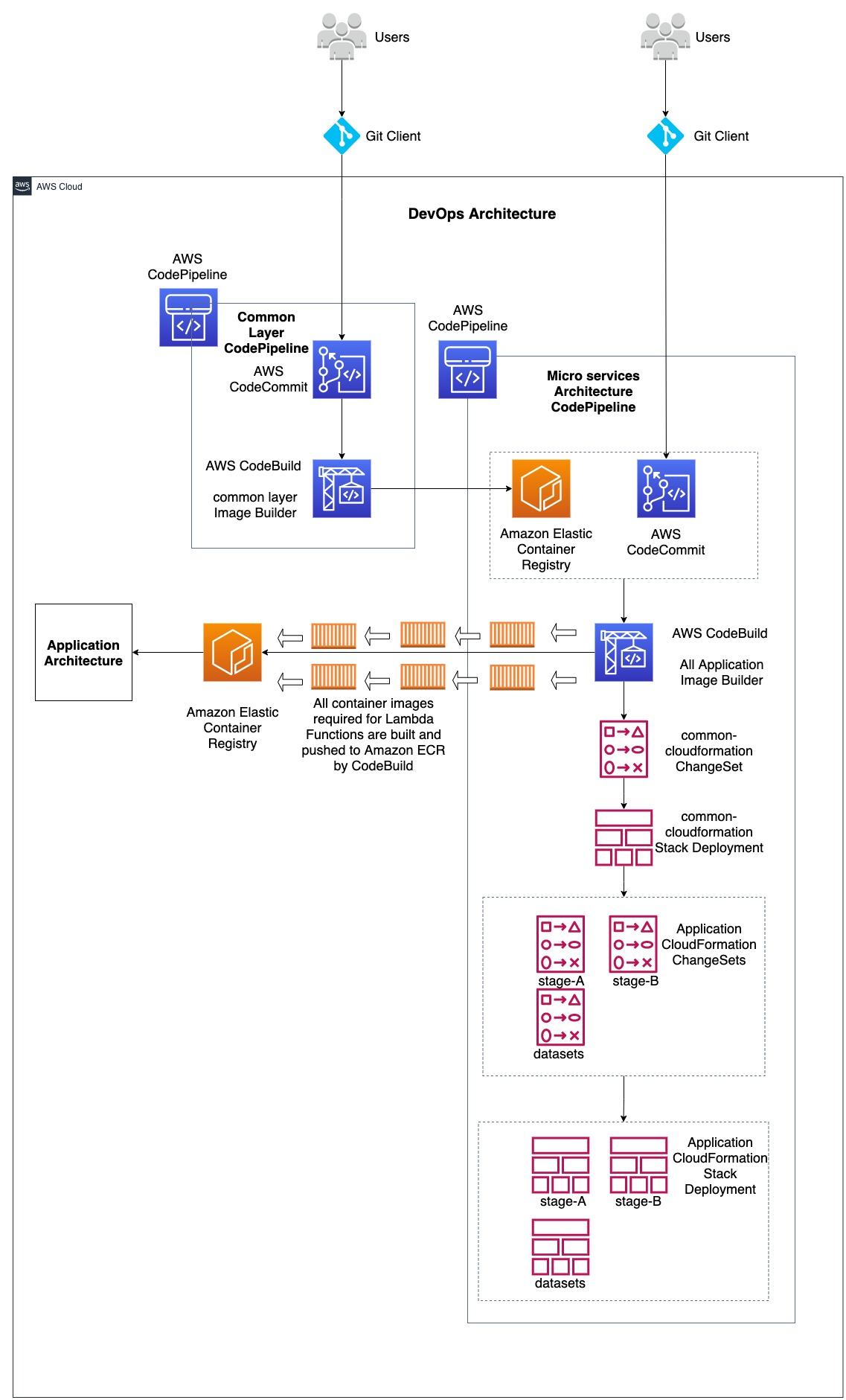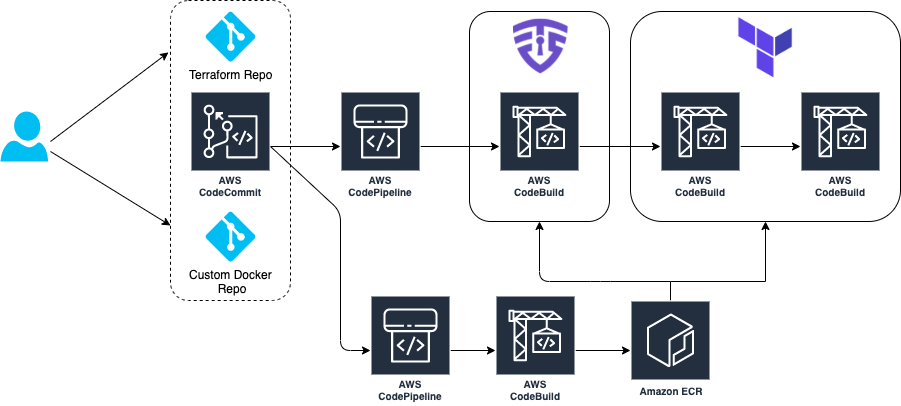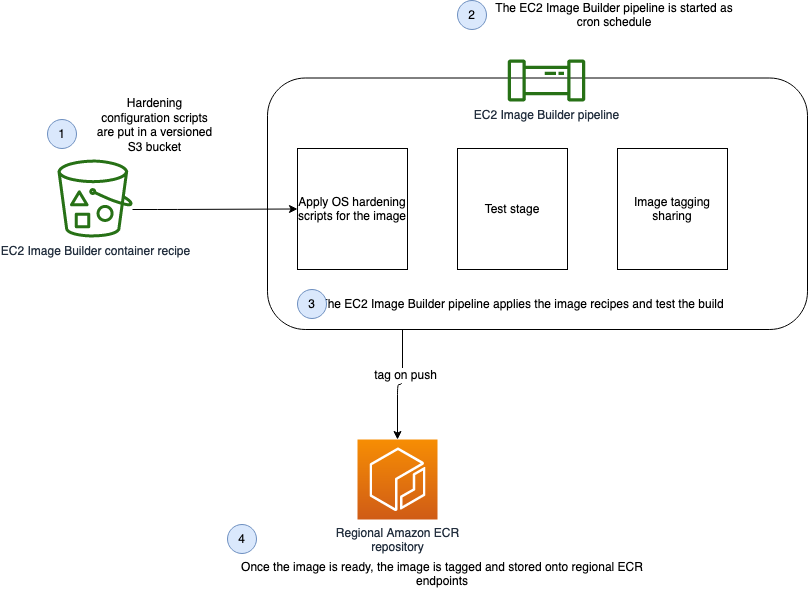AWS DevOps & Developer Productivity Blog
Tag: Amazon ECR
Reduce Docker image build time on AWS CodeBuild using Amazon ECR as a remote cache
In modern software development, containerization with Docker has revolutionized how we build and deploy applications. While Docker enables packaging applications into portable containers, the continuous need to update these images can be resource intensive. AWS CodeBuild addresses this challenge by providing a managed build service that eliminates infrastructure maintenance overhead. In this blog post, we’ll […]
Deploy container applications in a multicloud environment using Amazon CodeCatalyst
In the previous post of this blog series, we saw how organizations can deploy workloads to virtual machines (VMs) in a hybrid and multicloud environment. This post shows how organizations can address the requirement of deploying containers, and containerized applications to hybrid and multicloud platforms using Amazon CodeCatalyst. CodeCatalyst is an integrated DevOps service which […]
Orchestrate Jenkins Workloads using Dynamic Pod Autoscaling with Amazon EKS
This blog post will demonstrate how to leverage Jenkins with Amazon Elastic Kubernetes Service (EKS) by running a Jenkins Manager within an EKS pod. In doing so, we can run Jenkins workloads by allowing Amazon EKS to spawn dynamic Jenkins Agent(s) in order to perform application and infrastructure deployment. Traditionally, customers will setup a Jenkins Manager-Agent […]
Using AWS CodePipeline for deploying container images to AWS Lambda Functions
AWS Lambda launched support for packaging and deploying functions as container images at re:Invent 2020. In the post working with Lambda layers and extensions in container images, we demonstrated packaging Lambda Functions with layers while using container images. This post will teach you to use AWS CodePipeline to deploy docker images for microservices architecture involving […]
Secure and analyse your Terraform code using AWS CodeCommit, AWS CodePipeline, AWS CodeBuild and tfsec
Introduction More and more customers are using Infrastructure-as-Code (IaC) to design and implement their infrastructure on AWS. This is why it is essential to have pipelines with Continuous Integration/Continuous Deployment (CI/CD) for infrastructure deployment. HashiCorp Terraform is one of the popular IaC tools for customers on AWS. In this blog, I will guide you through […]
Choosing a CI/CD approach: AWS Services with BigHat Biosciences
Founded in 2019, BigHat Biosciences’ mission is to improve human health by reimagining antibody discovery and engineering to create better antibodies faster. Their integrated computational + experimental approach speeds up antibody design and discovery by combining high-speed molecular characterization with machine learning technologies to guide the search for better antibodies. They apply these design capabilities […]
Build and Deploy Docker Images to AWS using EC2 Image Builder
The NFL, an AWS Professional Services partner, is collaborating with NFL’s Player Health and Safety team to build the Digital Athlete Program. The Digital Athlete Program is working to drive progress in the prevention, diagnosis, and treatment of injuries; enhance medical protocols; and further improve the way football is taught and played. The NFL, in […]
CI/CD on Amazon EKS using AWS CodeCommit, AWS CodePipeline, AWS CodeBuild, and FluxCD
This post discusses how we can speed up the development of our Kubernetes infrastructure by using a continuous integration (CI) pipeline to build our Docker images and automatically deploy them to our Amazon Elastic Kubernetes Service (Amazon EKS) cluster using FluxCD and the GitOps philosophy as the continuous delivery (CD) element. To do so, we […]
Automate thousands of mainframe tests on AWS with the Micro Focus Enterprise Suite
We have seen mainframe customers often encounter scalability constraints, and they can’t support their development and test workforce to the scale required to support business requirements. These constraints can lead to delays, reduce product or feature releases, and make them unable to respond to market requirements. Furthermore, limits in capacity and scale often affect the quality of changes deployed, and are linked to unplanned or unexpected downtime in products or services.
The conventional approach to address these constraints is to scale up, meaning to increase MIPS/MSU capacity of the mainframe hardware available for development and testing. The cost of this approach, however, is excessively high, and to ensure time to market, you may reject this approach at the expense of quality and functionality. If you’re wrestling with these challenges, this post is written specifically for you.
Reducing Docker image build time on AWS CodeBuild using an external cache
With the proliferation of containerized solutions to simplify creating, deploying, and running applications, coupled with the use of automation CI/CD pipelines that continuously rebuild, test, and deploy such applications when new changes are committed, it’s important that your CI/CD pipelines run as quickly as possible, enabling you to get early feedback and allowing for faster […]









